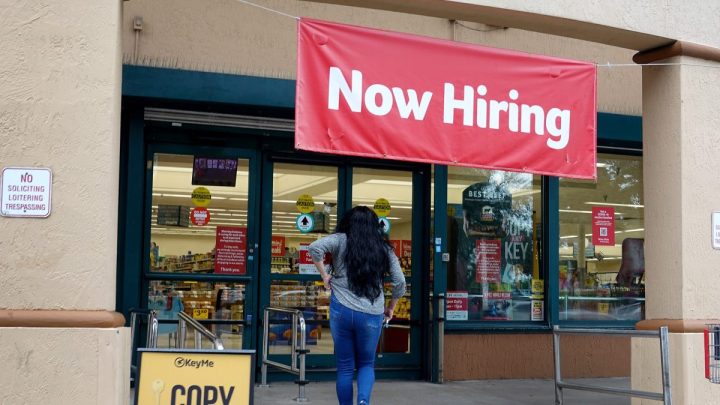
Fewer people are leaving their jobs. What’s that mean for the economy?
Fewer people are leaving their jobs. What’s that mean for the economy?

Some new indicators on the job market are out. Unemployment claims rose slightly last week to more than 200,000. And Wednesday, the April Job Openings and Labor Turnover report showed that the quits rate is down and back to average levels seen in 2019.
Does this mean the “great resignation” is over?
The past couple of years have been pretty busy for Edouard Thoumyre. He’s managing partner at Accur Recruiting Services, which works in retail, hospitality and travel.
“Demand for new talent was very, very high. And candidates were very heavily solicited from every direction. So it was definitely an employee-driven market,” he said.
In the last six months, he’s noticed a change.
“There are fewer employers looking to hire, and candidates are not as open to make moves. They are definitely … cautious,” he said. Cautious, perhaps, because of the economy. Typically, the quits rate helps economists gauge how confident people feel about retiring, finding a new job or quitting and living on a cushion of savings.
“And the pandemic really put those on steroids for a couple of years,” said Erica Groshen, a labor economist at Cornell. She said the labor market has seen so much disruption between the beginning of the pandemic and now. Workers were swiftly laid off, then desperately needed. People moved across states or looked for remote jobs. They wanted, and often received, more money.
That wage growth part has been cooling in recent months. And a lower quits rate could be a sign of more cooling to come, according to Harvard economist Jason Furman.
“One of the main reasons you give your workers a raise is you’re afraid they’re going to quit and go somewhere else,” he said.
When the quits rate goes down, so does wage growth … and growth in the cost of goods and services. So, if wage growth is driving inflation, that could be good. There is a caveat, though.
“Job openings remain very high. There are about 1.8 job openings for every unemployed worker,” Furman said. This means the labor market is still tighter than it was before the pandemic.
There’s a lot happening in the world. Through it all, Marketplace is here for you.
You rely on Marketplace to break down the world’s events and tell you how it affects you in a fact-based, approachable way. We rely on your financial support to keep making that possible.
Your donation today powers the independent journalism that you rely on. For just $5/month, you can help sustain Marketplace so we can keep reporting on the things that matter to you.











